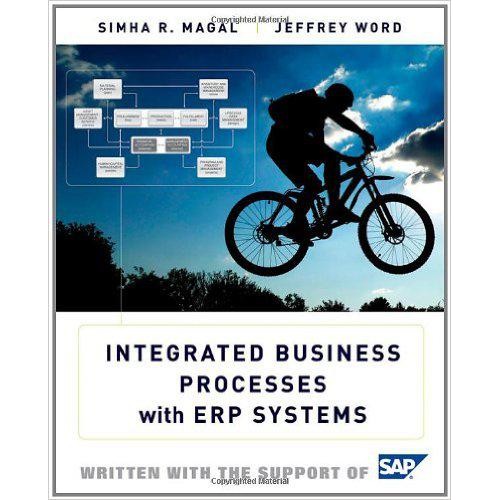Test Bank For Integrated Business Processes With ERP Systems 1st Edition by Simha R.Magal
Digital item No Waiting Time Instant DownloadISBN:9780470478448
In Stock
Original price was: $75.00.$25.00Current price is: $25.00.
Test Bank For Integrated Business Processes With ERP Systems 1st Edition by Simha R.Magal
Chapter 1: Introduction to Business Process
Learning Objectives
After completing this chapter you will be able to:
- Define the functional organizational structure, and explain why this structure creates problems for modern businesses
- Describe key business processes in an organization
- Identify the main integration points between and among processes
- Understand the cross-functional nature of processes and their relationship to organizational areas
- Adopt and apply an integrated perspective to business processes
- Describe GBI’s organizational structure
- Explain how the SAP system promotes an integrated approach to business processes
Chapter Outline and Teaching Suggestions
- The Functional Organizational Structure
- The Silo Effect
- Enterprise Systems
Discuss how companies are organized, and explain that the functional structure is the most common organizational structure. You can use a university or company or a business school department that you are familiar with as an example. Point out that processes are cross-functional. Ask the question: Why is the functional structure so common? Figure 1-1 will assist you in explaining the cross-functional nature of business processes.
Explain the silo effect and its negative implications for modern business organizations. You can give an example such as creating a sales order in sales and marketing with no integration or communication with inventory management or production.
Point out that the nature of the functional organizational structure and the cross-functional nature of processes directly conflict with each other.
Explain the benefits of an enterprise system (ES) (i.e., supports end-to-end processes, productivity, competitive edge, monitoring and changing of business processes, etc.).
- Business Processes
- Procurement – Buy
- Production – Make
- Fulfillment – Sell
- Material Planning – Plan
- Inventory and Warehouse Management – Store
- Lifecycle Data Management – Design
- Asset Management and Customer Service – Service
- Human Capital Management – People
- Project Management – Projects
- Financial Accounting – Track for Track for External Reporting
- Management Accounting – Track for Internal Reporting
Define and explain a business process. Point out that organizations use many processes to achieve their objectives and they employ specific terms to identify the processes. Processes can be directly related or closely related to creating and delivering goods and services. Use Figure 1-2 to illustrate a process that is executed in response to a need (trigger). The process is carried out through a sequence of steps and results in an output. You can use an example such as ordering supplies.
Processes can be supported by other processes and can have numerous sub-processes. Point out that communication and coordination of tasks are very important. Figure 1-3 can assist you in explaining this point. Ask students to indentify some other processes that they are familiar with.
Describe and give examples of the business processes (A – K). Figures 1-4 through 1-10 will assist you.
- Global Bicycle, Incorporated (GBI)
Explain that Global Bicycle, Incorporated (GBI) is a fictional company that is used to illustrate the important concepts, processes, and techniques discussed in the textbook. Figure 1-11 will assist you in explaining GBI’s organizational structure.
Call up the SAP University Alliance Community (UAC) website http://uac.sap.com, and demonstrate the functionality and services available for students. Also instruct students to read the GBI Backround Document on the UAC to understand GBI’s history, products and operations.
- How To Use This Book
- Chapter Structure
- SAP Software and Certification
- WileyPLUS
Explain the four key sections in most of the process chapters. Provide a brief background on the origins of SAP and the problems it initially solved.
Explain that most SAP consultants are not programmers and have mastered the material presented in this book.
Explain the three levels of SAP Certification and the value added of becoming a SAP-certified consultant.
Point out that the importance of the WileyPLUS online supplements and the value added to passing the SAP Certification exam. Reinforce the point that using this textbook and the ancillary materials can substitute for taking a formal TERP 10 course.


Reviews
There are no reviews yet.